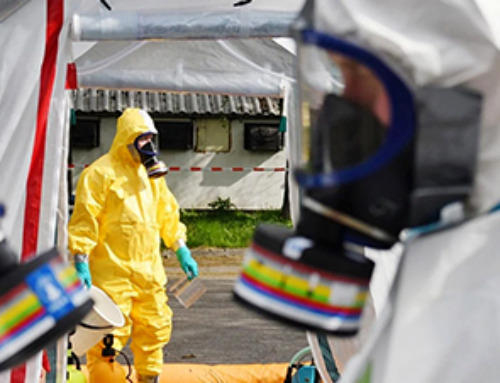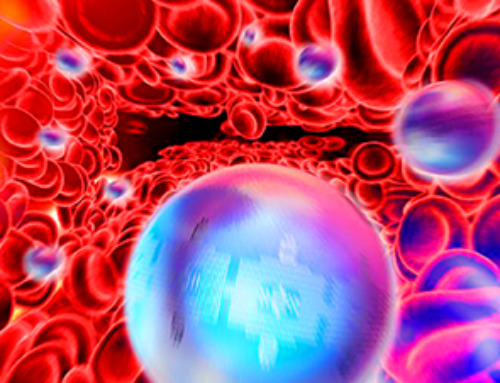Largest discovery of new virus species sheds light on the hidden virosphere.
Artificial intelligence (AI) has been used to reveal details of a diverse and fundamental branch of life living right under our feet and in every corner of the globe. These viruses not only play significant roles in human health but are also prevalent in extreme environments, highlighting their crucial roles in ecosystems and offering insights into viral evolution and diversity.
Using a machine learning tool, researchers have discovered 161,979 new species of RNA virus, a breakthrough that could dramatically enhance our understanding of Earth's biodiversity and assist in identifying millions more viruses yet to be characterized.
Published on October 9 in the journal Cell and conducted by an international team of researchers, the study is the largest virus species discovery paper ever published.
Unprecedented Viral Diversity Unveiled
"We have been offered a window into an otherwise hidden part of life on earth, revealing remarkable biodiversity," said senior author Professor Edwards Holmes from the School of Medical Sciences in the Faculty of Medicine and Health at the University of Sydney.
"This is the largest number of new virus species discovered in a single study, massively expanding our knowledge of the viruses that live among us," Professor Holmes said. "To find this many new viruses in one fell swoop is mind-blowing, and it just scratches the surface, opening up a world of discovery. There are millions more to be discovered, and we can apply this same approach to identifying bacteria and parasites."
The Role of RNA Viruses in Extreme Environments
Although RNA viruses are commonly associated with human disease, they are also found in extreme environments around the world and may even play key roles in global ecosystems. In this study they were found living in the atmosphere, hot springs, and hydrothermal vents.
"That extreme environments carry so many types of viruses is just another example of their phenomenal diversity and tenacity to live in the harshest settings, potentially giving us clues on how viruses and other elemental life-forms came to be," Professor Holmes said.
Advancements in Viral Identification via AI
The researchers built a deep learning algorithm, LucaProt, to compute vast troves of genetic sequence data, including lengthy virus genomes of up to 47,250 nucleotides and genomically complex information to discover more than 160,000 viruses.
"The vast majority of these viruses had been sequenced already and were on public databases, but they were so divergent that no one knew what they were," Professor Holmes said. "They comprised what is often referred to as sequence 'dark matter'. Our AI method was able to organize and categorize all this disparate information, shedding light on the meaning of this dark matter for the first time.
The AI tool was trained to compute the dark matter and identify viruses based on sequences and the secondary structures of the protein that all RNA viruses use for replication.
Future Directions and Applications of AI in Virology
It was able to significantly fast-track virus discovery, which, if using traditional methods, would be time intensive.
Co-author from Sun Yat-sen University, the study's institutional lead, Professor Mang Shi said: "We used to rely on tedious bioinformatics pipelines for virus discovery, which limited the diversity we could explore. Now, we have a much more effective AI-based model that offers exceptional sensitivity and specificity, and at the same time allows us to delve much deeper into viral diversity. We plan to apply this model across various applications."
Co-author Dr Zhao-Rong Li, who researches in the Apsara Lab of Alibaba Cloud Intelligence, said: "LucaProt represents a significant integration of cutting-edge AI technology and virology, demonstrating that AI can effectively accomplish tasks in biological exploration. This integration provides valuable insights and encouragement for further decoding of biological sequences and the deconstruction of biological systems from a new perspective. We will also continue our research in the field of AI for virology."
Professor Holmes said: "The obvious next step is to train our method to find even more of this amazing diversity, and who knows what extra surprises are in store."
Reference: "Using artificial intelligence to document the hidden RNA virosphere" by Xin Hou, Yong He, Pan Fang, Shi-Qiang Mei, Zan Xu, Wei-Chen Wu, Jun-Hua Tian, Shun Zhang, Zhen-Yu Zeng, Qin-Yu Gou, Gen-Yang Xin, Shi-Jia Le, Yin-Yue Xia, Yu-Lan Zhou, Feng-Ming Hui, Yuan-Fei Pan, John-Sebastian Eden, Zhao-Hui Yang, Chong Han, Yue-Long Shu, Deyin Guo, Jun Li, Edward C. Holmes, Zhao-Rong Li and Mang Shi, 9 October 2024, Cell.
DOI: 10.1016/j.cell.2024.09.027
The researchers declare no competing interests. The research was supported by the National Natural Science Foundation of China, the Shenzhen Science and Technology Program, the Natural Science Foundation of Guangdong Province, the Guangdong Province "Pearl River Talent Plan" Innovation and Entrepreneurship Team Project, the Hong Kong Innovation and Technology Fund (ITF) and the Health and Medical Research Fund. Professor Holmes is funded by a National Health and Medical Research Council of Australia Investigator grant and by AIR@InnoHK administered by the Innovation and Technology Commission, Hong Kong Special Administrative Region, China.
News
AI Helped Scientists Stop a Virus With One Tiny Change
Using AI, researchers identified one tiny molecular interaction that viruses need to infect cells. Disrupting it stopped the virus before infection could begin. Washington State University scientists have uncovered a method to interfere with a key [...]
Deadly Hospital Fungus May Finally Have a Weakness
A deadly, drug-resistant hospital fungus may finally have a weakness—and scientists think they’ve found it. Researchers have identified a genetic process that could open the door to new treatments for a dangerous fungal infection [...]
Fever-Proof Bird Flu Variant Could Fuel the Next Pandemic
Bird flu viruses present a significant risk to humans because they can continue replicating at temperatures higher than a typical fever. Fever is one of the body’s main tools for slowing or stopping viral [...]
What could the future of nanoscience look like?
Society has a lot to thank for nanoscience. From improved health monitoring to reducing the size of electronics, scientists’ ability to delve deeper and better understand chemistry at the nanoscale has opened up numerous [...]
Scientists Melt Cancer’s Hidden “Power Hubs” and Stop Tumor Growth
Researchers discovered that in a rare kidney cancer, RNA builds droplet-like hubs that act as growth control centers inside tumor cells. By engineering a molecular switch to dissolve these hubs, they were able to halt cancer [...]
Platelet-inspired nanoparticles could improve treatment of inflammatory diseases
Scientists have developed platelet-inspired nanoparticles that deliver anti-inflammatory drugs directly to brain-computer interface implants, doubling their effectiveness. Scientists have found a way to improve the performance of brain-computer interface (BCI) electrodes by delivering anti-inflammatory drugs directly [...]
After 150 years, a new chapter in cancer therapy is finally beginning
For decades, researchers have been looking for ways to destroy cancer cells in a targeted manner without further weakening the body. But for many patients whose immune system is severely impaired by chemotherapy or radiation, [...]
Older chemical libraries show promise for fighting resistant strains of COVID-19 virus
SARS‑CoV‑2, the virus that causes COVID-19, continues to mutate, with some newer strains becoming less responsive to current antiviral treatments like Paxlovid. Now, University of California San Diego scientists and an international team of [...]
Lower doses of immunotherapy for skin cancer give better results, study suggests
According to a new study, lower doses of approved immunotherapy for malignant melanoma can give better results against tumors, while reducing side effects. This is reported by researchers at Karolinska Institutet in the Journal of the National [...]
Researchers highlight five pathways through which microplastics can harm the brain
Microplastics could be fueling neurodegenerative diseases like Alzheimer's and Parkinson's, with a new study highlighting five ways microplastics can trigger inflammation and damage in the brain. More than 57 million people live with dementia, [...]
Tiny Metal Nanodots Obliterate Cancer Cells While Largely Sparing Healthy Tissue
Scientists have developed tiny metal-oxide particles that push cancer cells past their stress limits while sparing healthy tissue. An international team led by RMIT University has developed tiny particles called nanodots, crafted from a metallic compound, [...]
Gold Nanoclusters Could Supercharge Quantum Computers
Researchers found that gold “super atoms” can behave like the atoms in top-tier quantum systems—only far easier to scale. These tiny clusters can be customized at the molecular level, offering a powerful, tunable foundation [...]
A single shot of HPV vaccine may be enough to fight cervical cancer, study finds
WASHINGTON -- A single HPV vaccination appears just as effective as two doses at preventing the viral infection that causes cervical cancer, researchers reported Wednesday. HPV, or human papillomavirus, is very common and spread [...]
New technique overcomes technological barrier in 3D brain imaging
Scientists at the Swiss Light Source SLS have succeeded in mapping a piece of brain tissue in 3D at unprecedented resolution using X-rays, non-destructively. The breakthrough overcomes a long-standing technological barrier that had limited [...]
Scientists Uncover Hidden Blood Pattern in Long COVID
Researchers found persistent microclot and NET structures in Long COVID blood that may explain long-lasting symptoms. Researchers examining Long COVID have identified a structural connection between circulating microclots and neutrophil extracellular traps (NETs). The [...]
This Cellular Trick Helps Cancer Spread, but Could Also Stop It
Groups of normal cbiells can sense far into their surroundings, helping explain cancer cell migration. Understanding this ability could lead to new ways to limit tumor spread. The tale of the princess and the [...]





















